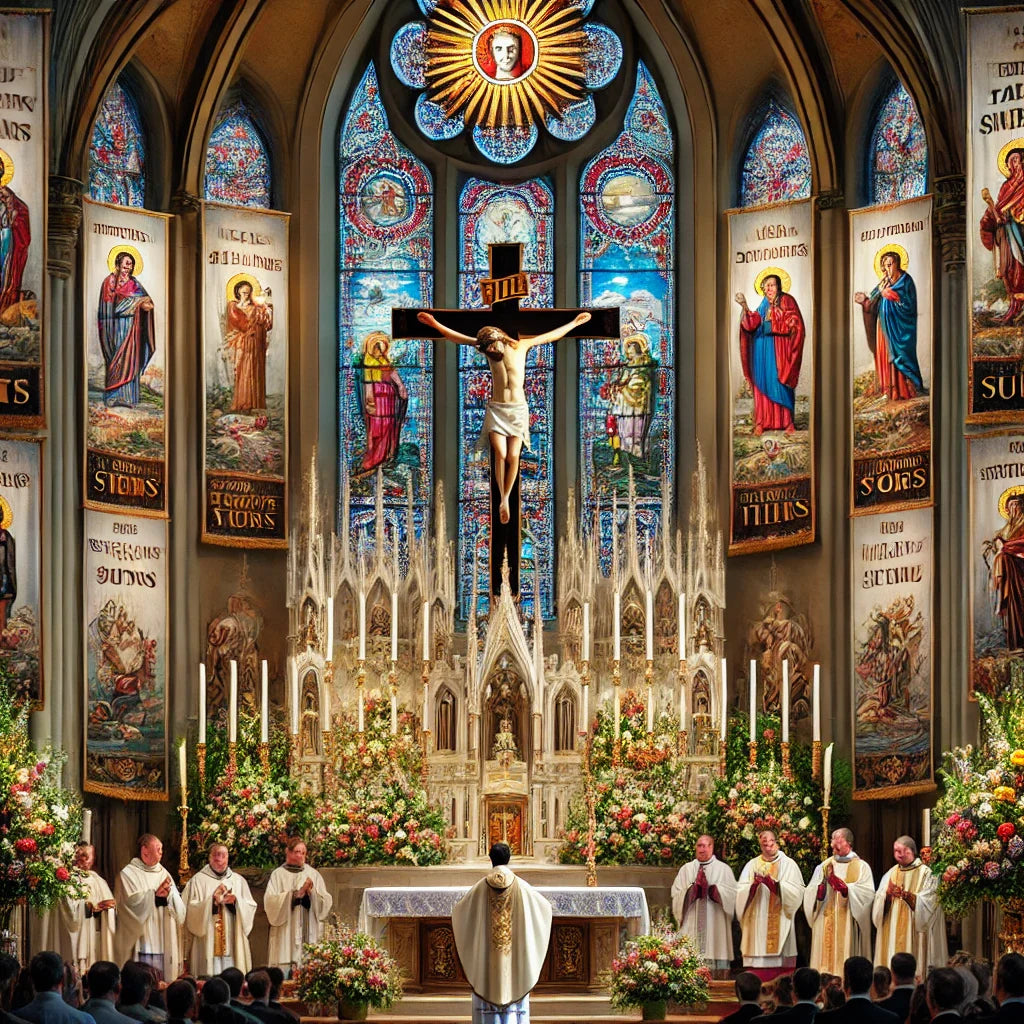
Feast Days and Solemnities Throughout the Year
|
|
Time to read 4 min
|
|
Time to read 4 min
The Catholic Church celebrates numerous feast days and solemnities throughout the liturgical year, commemorating significant events in salvation history, honoring saints, and reflecting on key theological mysteries. These celebrations serve as reminders of God’s grace, inspire the faithful, and strengthen community ties. This blog will explore major feast days each month, highlighting their significance, local traditions, prayers, and recommended Scripture readings.
Significance: This feast honors Mary’s divine motherhood and her role in salvation history. Local Traditions: Special Marian processions and novenas are held. Prayers: The Hail Mary and the Memorare. Scripture Reading: Luke 2:16-21 – The shepherds visit the infant Jesus.
Another important feast in January is the Feast of the Conversion of St. Paul (January 25), commemorating Paul’s transformation from persecutor to apostle of Christ.
Significance: Also known as Candlemas, it marks Jesus’ presentation in the temple. Local Traditions: Blessing of candles and processions. Prayers: The Canticle of Simeon. Scripture Reading: Luke 2:22-40 – Simeon and Anna recognize Jesus as the Messiah.
Additionally, the Feast of St. Blaise (February 3) is observed with the blessing of throats, invoking his intercession for protection from illnesses.
Significance: Honoring St. Joseph as the foster father of Jesus and patron of the Church. Local Traditions: Special Masses, community meals, and altar offerings. Prayers: The Litany of St. Joseph. Scripture Reading: Matthew 1:16-24 – St. Joseph’s obedience to God.
Another significant feast in March is the Annunciation (March 25), celebrating Mary’s acceptance of God’s plan for her to become the Mother of Jesus.
Significance: Celebrates Jesus’ resurrection, the cornerstone of Christian faith. Local Traditions: Easter vigils, sunrise services, and feasting. Prayers: The Regina Caeli. Scripture Reading: John 20:1-18 – The discovery of the empty tomb.
Holy Week precedes Easter, with important observances such as Palm Sunday, Holy Thursday, and Good Friday, each holding deep liturgical significance.
Significance: Marks Jesus’ ascension into heaven 40 days after Easter. Local Traditions: Outdoor Masses and kite-flying to symbolize Jesus’ ascent. Prayers: The Glorious Mysteries of the Rosary. Scripture Reading: Acts 1:6-11 – Jesus’ final instructions and ascension.
Additionally, May is dedicated to the Virgin Mary, with many parishes organizing Marian devotions, including the crowning of Mary.
Significance: Devotion to Christ’s merciful love and sacrifice. Local Traditions: Processions and consecration to the Sacred Heart. Prayers: The Litany of the Sacred Heart. Scripture Reading: John 19:31-37 – Blood and water from Christ’s side.
This month also includes the feast of Corpus Christi, emphasizing the real presence of Christ in the Eucharist, often marked by public processions.
Significance: Honors St. James, one of the first apostles to be martyred. Local Traditions: Pilgrimages, especially the Camino de Santiago in Spain. Prayers: The Prayer to St. James. Scripture Reading: Matthew 20:20-28 – Jesus’ teaching on service and sacrifice.
Another key feast in July is the Memorial of St. Mary Magdalene (July 22), recognizing her pivotal role as the first witness to Christ’s resurrection.
Significance: Celebrates Mary’s assumption into heaven. Local Traditions: Marian processions, rosary recitations, and floral decorations. Prayers: The Magnificat. Scripture Reading: Luke 1:39-56 – Mary’s visit to Elizabeth.
August also includes the feast of St. Augustine (August 28), a great theologian and Doctor of the Church.
Significance: Honors the cross as a symbol of salvation. Local Traditions: Veneration of relics of the True Cross. Prayers: The Prayer Before a Crucifix. Scripture Reading: John 3:13-17 – Jesus’ reference to the bronze serpent.
Another major feast is the Nativity of the Blessed Virgin Mary (September 8), celebrated with special liturgies and processions.
Significance: Celebrates the life of St. Francis, patron of animals and the environment. Local Traditions: Blessing of animals and eco-awareness initiatives. Prayers: The Peace Prayer of St. Francis. Scripture Reading: Matthew 11:25-30 – Jesus’ invitation to humility.
Additionally, the Feast of Our Lady of the Rosary (October 7) emphasizes devotion to Mary through the rosary.
Significance: Honors all saints, known and unknown. Local Traditions: Lighting candles for the deceased and visiting cemeteries. Prayers: The Litany of the Saints. Scripture Reading: Matthew 5:1-12 – The Beatitudes.
November also includes All Souls' Day (November 2), dedicated to praying for the faithful departed.
Significance: Celebrates the birth of Jesus Christ. Local Traditions: Midnight Mass, nativity plays, and Christmas feasts. Prayers: The Christmas Novena. Scripture Reading: Luke 2:1-20 – The birth of Jesus and the visit of the shepherds.
Additionally, the Feast of the Immaculate Conception (December 8) highlights Mary’s sinless conception and is a significant Marian feast.
The liturgical year is filled with moments of reflection, joy, and reverence. By celebrating these feast days and solemnities, the faithful deepen their spiritual journey and remain connected to the traditions of the Church. Participating in these events through prayer, Scripture reading, and local customs enriches the Catholic faith and fosters a sense of community throughout the year. Expanding our understanding of these sacred days helps us grow closer to God and appreciate the rich tapestry of Catholic tradition.